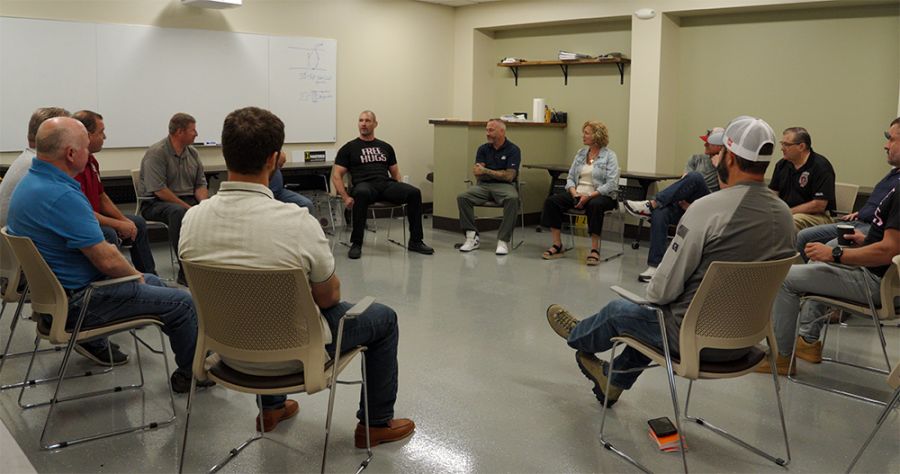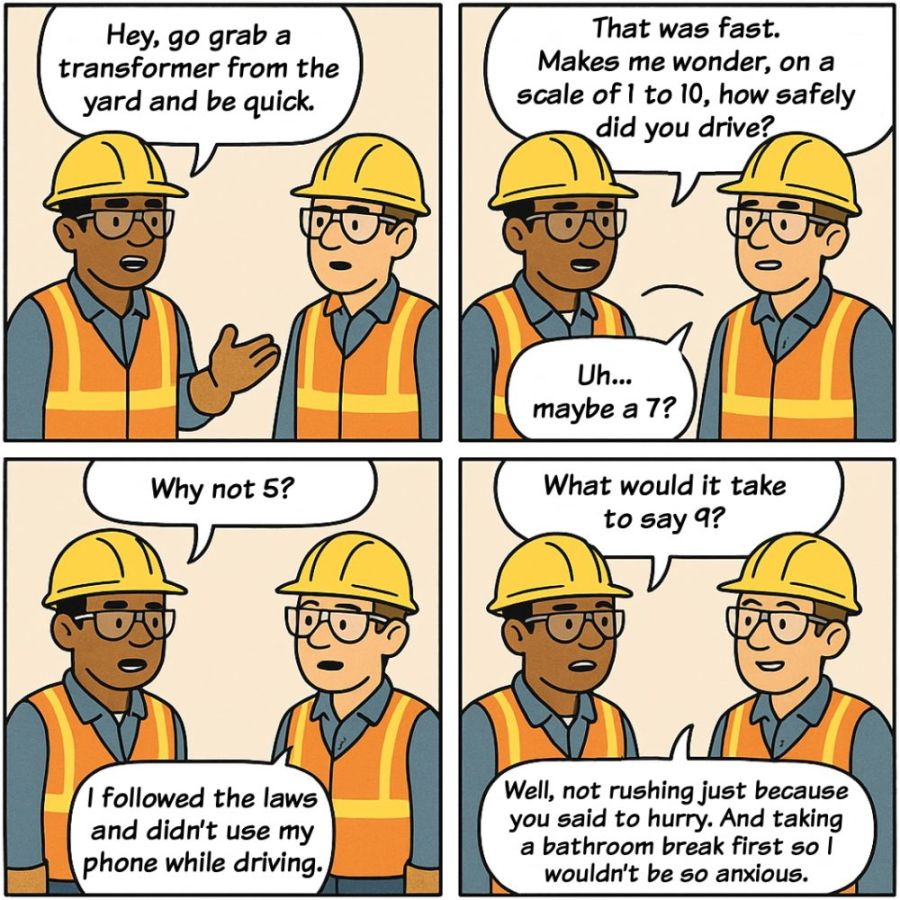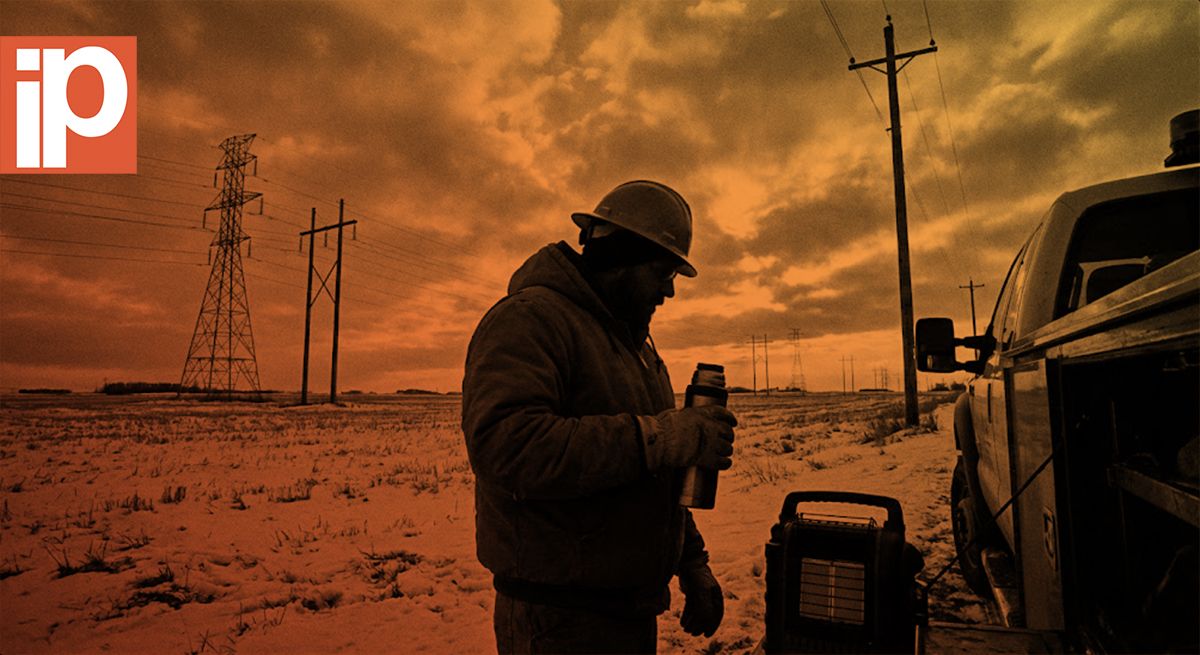
6 Seasonal Strategies for Worker Well-Being
The holiday season is a time for family and celebration, but it is also one of the busiest times of year. Stress can easily creep in, creating safety hazards at work and at home. Staying mentally alert and focused during this period is key to preventing incidents. Personal finances are among the most common seasonal […]
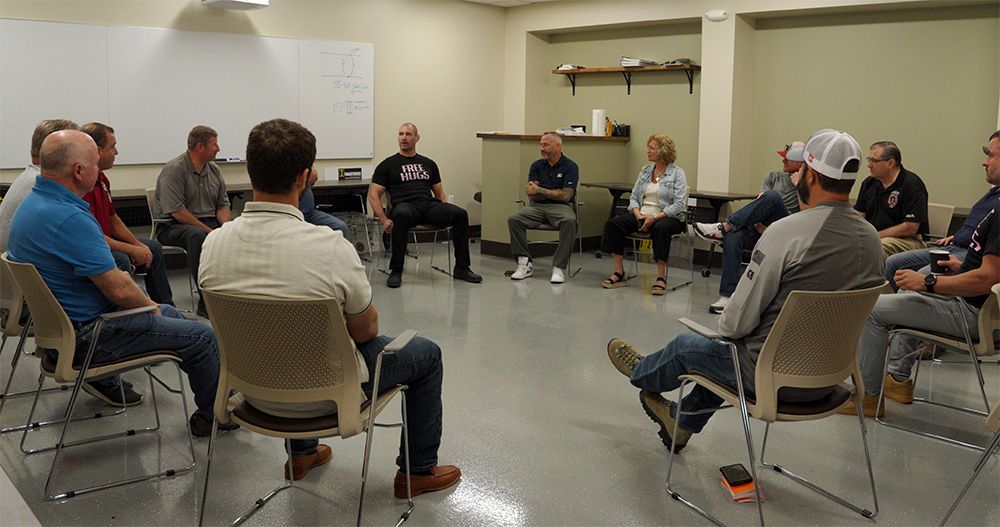
Inspecting the Fifth Wire: Winning the War on Lineworker Suicide
Utility organizations must recognize suicide as a grave personal injury, equipping the workforce with adequate mental health training and tools.
Lineworkers confront daily risks many can’t imagine – arc flashes, falls, electrocutions and more. Yet there’s a silent, insidious threat currently claiming more lives in the electric utility industry than any physical injury. We’re talking about suicide. Safety professionals dedicate their careers to mitigating risk and preventing harm, understanding that serious injuries and fatalities devastate […]
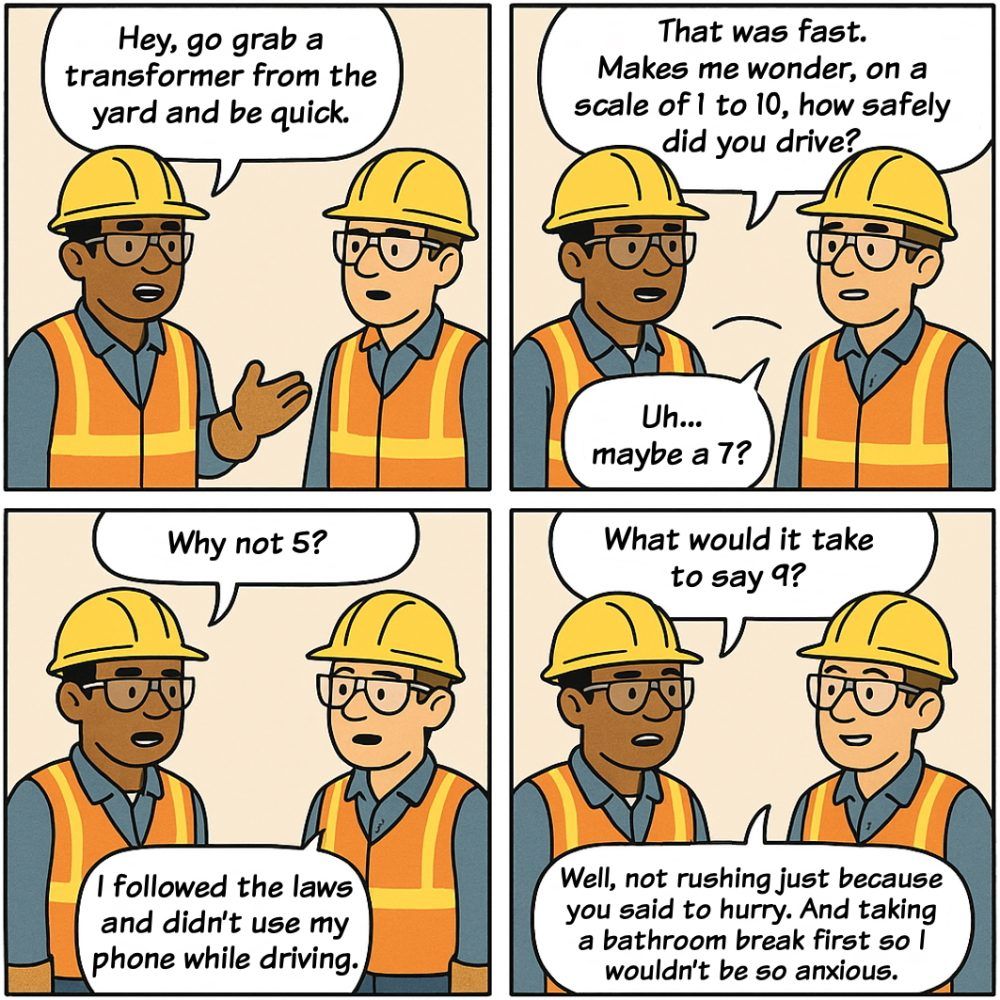
When the System Isn’t Enough: How to Create Personal Motivation That Saves Lives
Used in combination, the Total Worker Health framework and motivational interviewing offer a proven way to foster lasting behavioral change.
Author’s Note: In this article – the first in a five-part series – we explore the notion of accepting 100% accountability for our safety at work, just as we do at home. This is an act of self-preservation. The hope is that management’s safety focus will overlap with our own preparation. We want as much […]

Forecasting the Future of Utility Safety: 10 Predictions for 2026 and Beyond
Technology will become increasingly vital to industry safety and sustainability efforts over the next decade.
As we stand on the precipice of a new era in the utility sector, it is clear the future holds transformative potential driven by relentless technological progress. We are already seeing not just small changes but a complete overhaul. The horizon is replete with innovations aimed at redefining safety protocols and operational efficiency. Predicted advancements […]

Safety By Design: Evaluation and Effective Action
Use leading indicators, meaningful audits and structured corrective actions to strengthen safety management systems.
The previous articles in this series outlined the essential components of a strong safety management system (SMS). To achieve safety success, electric power organizations must ensure those components align with and support one another. This article – the last in the series – addresses two final topics of importance: assessing an organization’s SMS performance and […]

2025 Update: Ferroresonance Explained
Ferroresonance is a complicated issue, one that industry workers must be educated about. That’s because as the number of URD system installations grows and systems age, instances of ferroresonance increase – as do threats to worker and customer safety, equipment and service reliability. I first became acquainted with ferroresonance in the 1980s while troubleshooting a […]

Don’t Cross That Line
In this installment of “Voice of Experience,” I am going to share a safety perspective that struck a real chord with me when someone offered it during a recent meeting. My goal in passing it along during this season of reflection is to prompt readers to contemplate and continue refining their safe work practices. From […]

December 2025 Q&A
Q: Can I ground through a wave trap? A: General discussion about wave or line traps centers on their function. At operating frequency, they have extremely low impedance to any voltage at 60 Hz. Some would say that for the sake of convenience, it’s OK to ground at a switch even where there is a […]
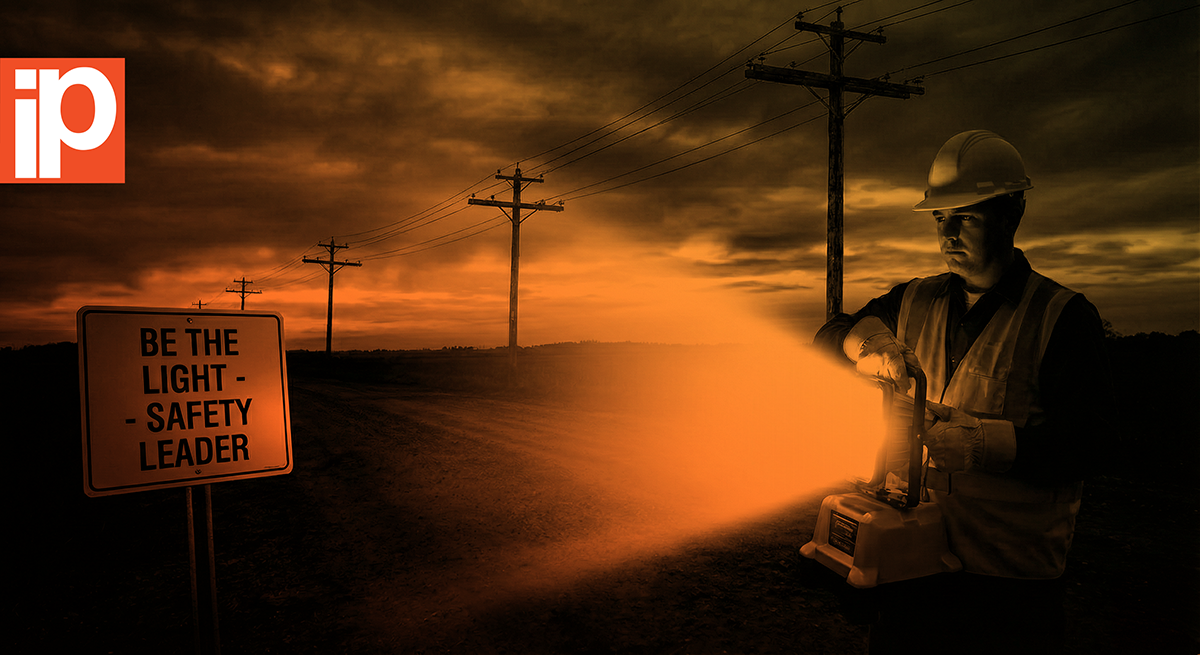
Be the Light
Here’s how you can become a brightly shining safety light in your organization.
“This little light of mine, I’m gonna let it shine, let it shine, let it shine, let it shine.” Light. We literally cannot live without it. In addition to sustaining life, light can be used in various other ways, including helping us to see clearly and sanitizing unsafe conditions. That sounds a lot like what […]
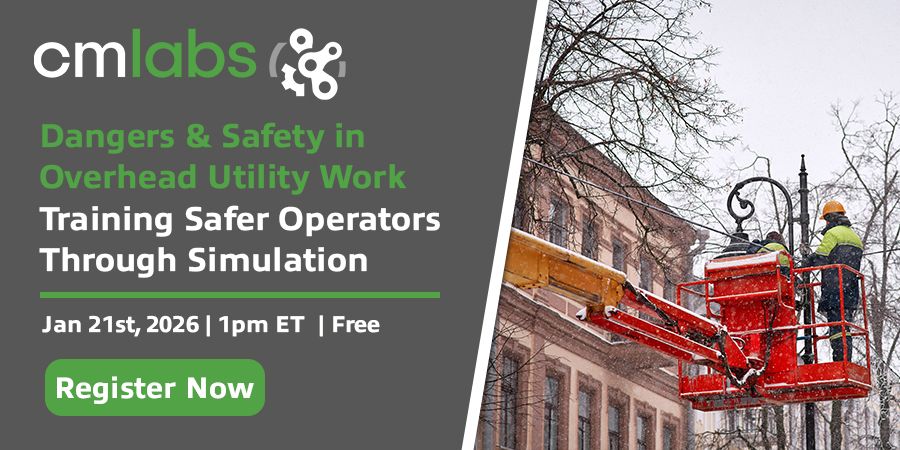
Dangers & Safety in Overhead Utility Work Training Safer Operators Through Simulation
SPONSORED BY CM LABS
JANUARY 21ST, 2026 @ 1PM ET
Dangers & Safety in Overhead Utility Work Training Safer Operators Through Simulation
Which will include:
- The key industry challenges, including workforce shortages, experience gaps, and persistent incident and fatality risks.
- Why traditional training methods alone can’t fully prepare linemen for high-risk situations.
- How simulation enables a more data-driven approach to workforce development .
- How simulation helps reduce incidents, accelerate onboarding, and lower training costs .
6 Seasonal Strategies for Worker Well-Being
The holiday season is a time for family and celebration, but it is also one of the busiest times of year. Stress can easily creep in, creating safety hazards at work and at home. Staying mentally alert and focused during this period is key to preventing incidents.
Personal finances are among the…
In the News
Utility organizations must recognize suicide as a grave personal injury, equipping the workforce with adequate mental health training and tools.
Inspecting the Fifth Wire: Winning the War on Lineworker Suicide
Lineworkers confront daily risks many can’t imagine – arc flashes, falls, electrocutions and more. Yet there’s a silent, insidious threat currently claiming more lives in the electric utility industry than any physical injury.
We’re talking about suicide.
Safety professionals dedicate their careers to mitigating risk and preventing harm, understanding that serious injuries and fatalities devastate lives and ripple through the workforce. But what if the most devastating injury of all is one largely overlooked in traditional safety programs?
Industry employers already deliver tradition…
Used in combination, the Total Worker Health framework and motivational interviewing offer a proven way to foster lasting behavioral change.
When the System Isn’t Enough: How to Create Personal Motivation That Saves Lives
Author’s Note: In this article – the first in a five-part series – we explore the notion of accepting 100% accountability for our safety at work, just as we do at home. This is an act of self-preservation. The hope is that management’s safety focus will overlap with our own preparation. We want as…
Technology will become increasingly vital to industry safety and sustainability efforts over the next decade.
Forecasting the Future of Utility Safety: 10 Predictions for 2026 and Beyond
As we stand on the precipice of a new era in the utility sector, it is clear the future holds transformative potential driven by relentless technological progress.
We are already seeing not just small changes but a complete overhaul. The horizon is replete with innovations aimed at redefining sa…
Use leading indicators, meaningful audits and structured corrective actions to strengthen safety management systems.
Safety By Design: Evaluation and Effective Action
The previous articles in this series outlined the essential components of a strong safety management system (SMS). To achieve safety success, electric power organizations must ensure those components align with and support one another.
This article – the last in the series – addresses two final topics of importance: assessing an organization’s SMS performance and implementing a structured corrective action plan in response to identified performance gaps. We will use ANSI/ASSP Z10-2019, “Occupational Health and Safety Management Systems,” as a guide, focusing on performance measurements, in…
Use leading indicators, meaningful audits and structured corrective actions to strengthen safety management systems.
Safety By Design: Evaluation and Effective Action
2025 Update: Ferroresonance Explained
Ferroresonance is a complicated issue, one that industry workers must be educated about. That’s because as the number of URD system installations grows and systems age, instances of ferroresonance increase – as do threats to worker and customer safety, equipment and service reliability.
I first…
Don’t Cross That Line
In this installment of “Voice of Experience,” I am going to share a safety perspective that struck a real chord with me when someone offered it during a recent meeting. My goal in passing it along during this season of reflection is to prompt readers to contemplate and continue refining their safe…
December 2025 Q&A
Q: Can I ground through a wave trap?
A: General discussion about wave or line traps centers on their function. At operating frequency, they have extremely low impedance to any voltage at 60 Hz. Some would say that for the sake of convenience, it’s OK to ground at a switch even where there is a l…
Here’s how you can become a brightly shining safety light in your organization.
Be the Light
“This little light of mine, I’m gonna let it shine, let it shine, let it shine, let it shine.”
Light. We literally cannot live without it.
In addition to sustaining life, light can be used in various other ways, including helping us to see clearly and sanitizing unsafe conditions. That sounds…
Opinion
6 Seasonal Strategies for Worker Well-Being
Clint Lozar
Inspecting the Fifth Wire: Winning the War on Lineworker Suicide
Tom Murphy and Brian McKeon
When the System Isn’t Enough: How to Create Personal Motivation That Saves Lives
Tom Cohenno, Ed.D., CSP, CUSP, HWC
Forecasting the Future of Utility Safety: 10 Predictions for 2026 and Beyond
Shawn M. Galloway
Video
6 Seasonal Strategies for Worker Well-Being
The holiday season is a time for family and celebration, but it is also one of the busiest times of year. Stress can easily creep in, creating safety hazards at work and at home. Staying mentally alert and focused during this period is key to preventing incidents. Personal finances are among the mo…
Featured Topics
6 Seasonal Strategies for Worker Well-Being
The holiday season is a time for family and celebration, but it is also one of the busiest times of year. Stress can easily creep in, creating safety hazards at work and at home. Staying mentally alert and focused during this period is key to preventing incidents.
Personal finances are among the…
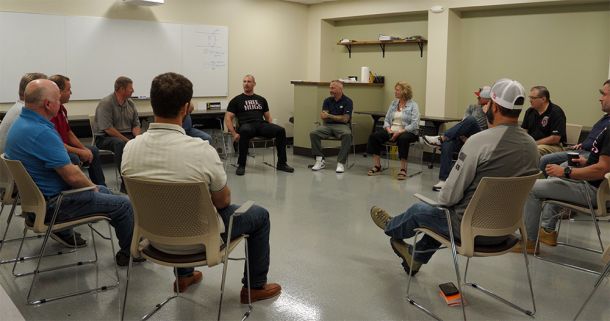
Utility organizations must recognize suicide as a grave personal injury, equipping the workforce with adequate mental health training and tools.
Inspecting the Fifth Wire: Winning the War on Lineworker Suicide
Lineworkers confront daily risks many can’t imagine – arc flashes, falls, electrocutions and more. Yet there’s a silent, insidious threat currently claiming more lives in the electric utility industry than any physical injury.
We’re talking about suicide.
Safety professionals dedicate their c…
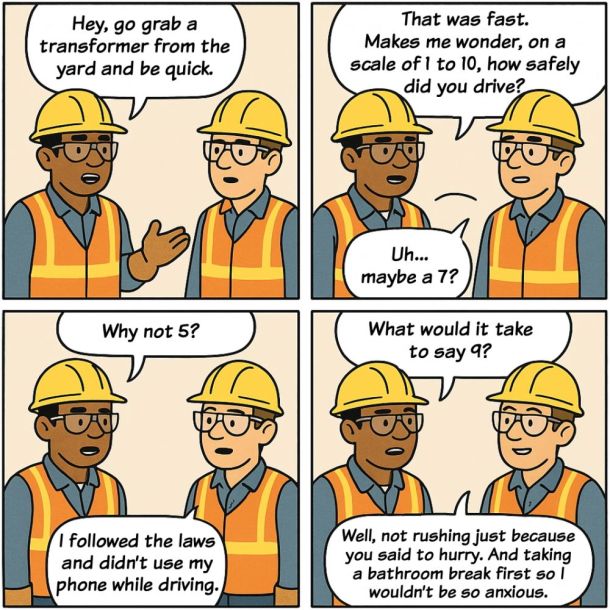
Used in combination, the Total Worker Health framework and motivational interviewing offer a proven way to foster lasting behavioral change.
When the System Isn’t Enough: How to Create Personal Motivation That Saves Lives
Author’s Note: In this article – the first in a five-part series – we explore the notion of accepting 100% accountability for our safety at work, just as we do at home. This is an act of self-preservation. The hope is that management’s safety focus will overlap with our own preparation. We want as…
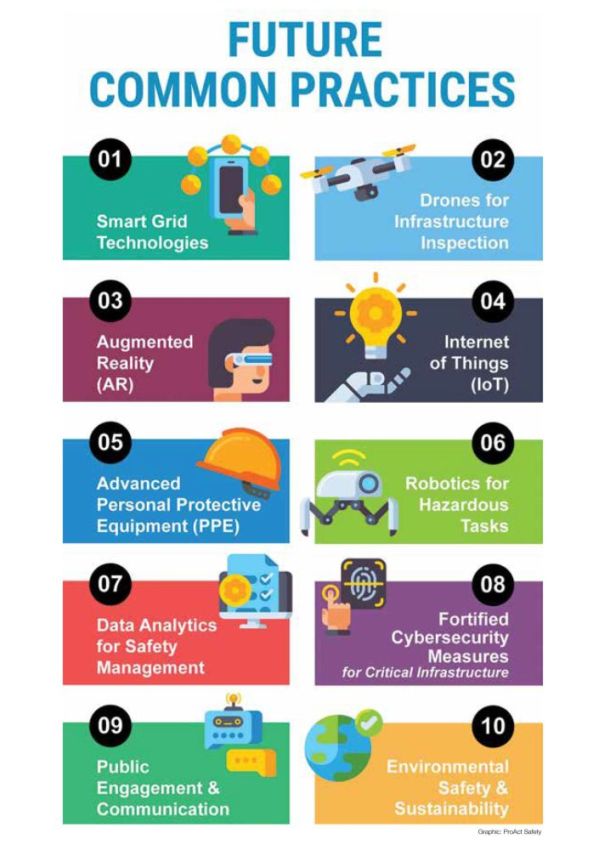
Technology will become increasingly vital to industry safety and sustainability efforts over the next decade.
Forecasting the Future of Utility Safety: 10 Predictions for 2026 and Beyond
As we stand on the precipice of a new era in the utility sector, it is clear the future holds transformative potential driven by relentless technological progress.
We are already seeing not just small changes but a complete overhaul. The horizon is replete with innovations aimed at redefining sa…
Use leading indicators, meaningful audits and structured corrective actions to strengthen safety management systems.
Safety By Design: Evaluation and Effective Action
The previous articles in this series outlined the essential components of a strong safety management system (SMS). To achieve safety success, electric power organizations must ensure those components align with and support one another.
This article – the last in the series – addresses two final…
2025 Update: Ferroresonance Explained
Ferroresonance is a complicated issue, one that industry workers must be educated about. That’s because as the number of URD system installations grows and systems age, instances of ferroresonance increase – as do threats to worker and customer safety, equipment and service reliability.
I first…
6 Seasonal Strategies for Worker Well-Being
The holiday season is a time for family and celebration, but it is also one of the busiest times of year. Stress can easily creep in, creating safety hazards at work and at home. Staying mentally alert and focused during this period is key to preventing incidents.
Personal finances are among the most common seasonal stressors that can distract us during critical moments that demand our full attention. Time management, too, often becomes an issue in December as we push to meet year-end deadlines while juggling an assortment of social obligations. Disrupted schedules have the power to wreak havoc on our daily safety habits, but we must not rush through safety inspections, skip over PPE requirements or take other risks.
Beware Those New Year’s Hazards
In the U.S., most holiday safety advice focuses on the weeks just before Christmas. Keep in mind, however, that problems can also arise in January once the workforce has returned to a normal operating schedule. Employees who took time off from the hustle and bustle of the standard workweek might feel a little rusty but cannot forget appropriate safety protocols or unintentionally omit or transpose steps in their work processes.
Given these factors, well-timed safety reminders are particularly important. Here are six to share with your employees in the coming weeks.
1. Resist the urge to rush. Time scarcity increases potential for errors and incidents. Be realistic when setting daily goals, prioritizing what must be accomplished and delegating tasks. Ensure that even in the most hectic environments, employees know that (1) their well-being is valued above all else and (2) they must never, ever forgo hazard analyses, tool and equipment inspections, required PPE or other safety procedures – not even one.
2. Prioritize self-care. Carve out time each day for sufficient sleep and nutritious meals, which give us energy and improve our focus. Find ways to work physical activity into your day, and ensure proper hydration, particularly in physically demanding environments. A healthy body supports the clear mind necessary for safe decision-making.
3. Use healthy coping mechanisms. Talk to your supervisor or a trusted peer when you feel rushed, distracted, overwhelmed or otherwise unprepared to safely complete your work. Explore deep breathing and other mindfulness techniques to lower cortisol levels. If you have access to an employee assistance program, reach out to the program administrator for more information about support services. Managing your mental health as well as your physical health aids in preventing mistakes.
4. Employ the STAR self-check tool. To regain focus and reduce errors on the job, remember the STAR acronym: stop and think about the task you are about to perform, act, and then review your performance by comparing desired versus actual outcomes.
5. Ease back in. Upon returning to work after the holidays, huddle with your team for a refresher on safe work procedures. Lead the conversation with reminders about hazard awareness and stop-work authority.
6. Treat safety as a shared responsibility. Establishing and maintaining a safe working environment is a collective effort, not the sole duty of the designated person in charge. Each of us must do our part to protect our brothers and sisters and ourselves. This includes speaking up when we see or otherwise sense a threat to someone’s physical or mental wellness, as well as checking in regularly with coworkers, particularly those that we know are struggling in some way.
The Bottom Line
By valuing and prioritizing both our personal well-being and the welfare of others, we lower our risk of incidents and injuries – even now, during one of the busiest times of year.
About the Author: Clint Lozar is HSE manager for Terex Utilities (www.terex.com/utilities). He has 18 years of industry safety experience, specializing in manufacturing operations, regulatory compliance and continuous improvement.

Utility organizations must recognize suicide as a grave personal injury, equipping the workforce with adequate mental health training and tools.
Inspecting the Fifth Wire: Winning the War on Lineworker Suicide
Lineworkers confront daily risks many can’t imagine – arc flashes, falls, electrocutions and more. Yet there’s a silent, insidious threat currently claiming more lives in the electric utility industry than any physical injury.
We’re talking about suicide.
Safety professionals dedicate their careers to mitigating risk and preventing harm, understanding that serious injuries and fatalities devastate lives and ripple through the workforce. But what if the most devastating injury of all is one largely overlooked in traditional safety programs?
Industry employers already deliver traditional safety training to employees and outfit them with personal protective equipment as their last line of defense against harm. These companies aren’t waiting for a physical injury to occur before providing the necessary tools and training.
It makes sense to ask, then, what’s stopping utility organizations from providing workers with tools and training to prevent self-harm?
Because suicide is arguably the greatest of all personal injuries, it demands levels of training and attention that match or exceed those invested in preventing other types of physical injuries. Fortunately, we don’t need to reinvent the wheel. We simply need to extend the logic of our existing safety principles.
Consider this: We wouldn’t dream of sending a brand-new apprentice up a pole with only a brief classroom explanation about how to climb it, plus a phone number to call or an app to download for climbing instructions. Yet this is often the industry’s approach to mental health. We direct employees to resources, but are we also actively training them to recognize warning signs in themselves and their peers? When is the last time we practiced our intervention skills or worked to destigmatize the act of seeking help?
Just as we train utility crews to inspect every visible wire on a pole, we are also morally obligated to teach them to inspect the invisible one – what we refer to as the “fifth wire” – that connects them as human beings.
Stark Stats
The 2023 national suicide rate among the general population was 14.1 per 100,000, according to the U.S. Centers for Disease Control and Prevention (see www.cdc.gov/suicide/facts/data.html). Per the 2023 Annual Report on Suicide in the Military, the rate per 100,000 active service members was 35.9 for the Marine Corps, 34.8 for the Army, 22.5 for the Air Force and 21 for the Navy (see www.dspo.mil/Portals/113/2024/documents/annual_report/ARSM_CY23_final_508c.pdf).
The data is even starker for those serving our industry. Among construction workers in 2022, there were over five times more suicide deaths than fatal work injuries (see www.cpwr.com/wp-content/uploads/DataBulletin-September2024.pdf); CDC data from 2021 paints an equally disturbing picture (see https://cdc.gov/mmwr/volumes/72/wr/mm7250a2.htm).
These statistics are a clarion call demanding that we stop overlooking the invisible fifth wire that connects the human crews who keep our lights on. But recognizing that call alone isn’t enough. Utility safety and operations leaders must actively promote a community of belonging within their organizations, equipping the workforce with simple, practical, effective tools – just as they do for physical safety purposes.
A sense of belonging is a critical driver of safety and performance in high-stakes environments like line work. According to a 2019 Harvard Business Review article, “When people feel like they belong at work, they are more productive, motivated, engaged and 3.5 times more likely to contribute to their fullest potential …” (see https://hbr.org/2019/02/the-surprising-power-of-simply-asking-coworkers-how-theyre-doing).
Put simply, maintaining cohesive peer networks is a fundamental need and strategy in the war on lineworker suicide.
Battle Formation: Shield, Sword and Armor
Winning the war requires each of us to employ three critical items to protect ourselves from making destructive choices: the shield of vulnerability, the sword of stigma obliteration and the armor of peer networks.
The Shield of Vulnerability
Lineworkers make electrical connections every day. As leaders, we must help them connect with each other. This is the basis of the Sweethearts & Heroes Fifth Wire Program, which was founded on one simple, field-tested process built for life’s realities: Circle. One of the world’s oldest human connection practices, stretching back 400,000 years, the Circle process fosters a sense of belonging and purpose among group members, establishes positive social norms, builds networks of support, and develops critical skills for personal and collective well-being.
Vulnerability is encouraged in Circle, nurturing an environment in which individuals are more likely to reach out for help before they reach a crisis point. The act of being vulnerable also provides opportunities for us to share the hope we all carry with everyone else in the group.
Circle is designed to build upon a group’s strengths. Sadly, however, vulnerability is often associated with weakness – and fear of appearing weak can paralyze us. Still, we overcome our struggles and build the strength we seek by finding the courage to talk about difficult topics. Winning the war on lineworker suicide requires us to acknowledge our shared humanity, to create psychologically safe environments in which it’s OK for anyone to say, “I’m not OK” – knowing their admission will be met with support, not judgment. By leading with personal stories of overcoming adversity, we inspire hope in others that they can successfully conquer their own challenges.
The Sword of Stigma Obliteration
Stigma isolates people in their pain. Many communities perpetuate a pervasive stigma around suicide, often reinforcing silence through cultural norms and misconceptions about weakness and resilience.
Under pressure to appear “fine” or maintain a facade of strength, individuals can suffer in secrecy, fearing judgment, alienation or punishment. Modern society’s reluctance to openly address suicide not only deepens the isolation of those struggling but deprives communities of the awareness and empathy needed to foster true healing and prevention.
The sword of stigma obliteration is our tool for tackling this formidable opponent, cutting through the silence and shame that allow hopelessness to fester. Engaging in open, honest conversations is the most potent way to wield it because discussion of complex subjects – especially tough ones like loss and grief – has an inoculating effect on us. When we candidly speak about an immense personal struggle, that act typically helps us and our listeners, piercing through isolation and offering a path forward.
We must actively create platforms and opportunities for these conversations among utility crews with the goal of making them routine and accepted – just like any other safety briefing.
The Armor of Peer Networks
Finally, we must equip ourselves with the armor of peer networks and foster a culture of mutual support and shared responsibility.
One crucial aspect of this is staying “left of bang,” a concept developed by Patrick Van Horne that emphasizes proactive intervention based on behavioral cues. Behavior is communication. When someone begins isolating themselves at lunchtime, giving away their tools or exhibiting sudden changes in mood – even nearly imperceptible shifts – these are warning signs. We must train the workforce to recognize and respond to these signs before “the bang” happens. Fortunately, each of us possesses a profound intuitive capacity in our connections with others, a powerful resource rooted in the subconscious mind that can be intentionally honed into a finely tuned superpower.
For instance, an auxiliary nurse working in a psychiatric facility may be more adept at predicting a patient’s suicidal ideations than a skilled clinician armed with standard evaluation tools. This predictive ability is not mystical; it is developed by consistently observing an individual. Through their interactions, the nurse establishes a baseline of the patient’s nonverbal cues and mannerisms, creating a deep-seated intuitive connection – one that makes subtle, critical shifts in behavior immediately apparent.
During his work with the U.S. Air Force on the Wingman-Connect suicide prevention program, Peter A. Wyman, Ph.D., director of the Network Health and Prevention Program at the University of Rochester, found that peers set the adaptive, healthy social norms for each other. That means whether it’s in the electric utility industry, among our children or in the Marine Corps, people look up to those with prestige and influence within their peer groups. Thus, we must empower these informal leaders – particularly those who have weathered their own storms – to champion mental well-being, model help-seeking behavior and actively support their colleagues.
Much like Wingman-Connect, the Fifth Wire Program has repeatedly demonstrated that strong social bonds within a cohesive group mitigate suicidal ideation and depression symptoms. Circle offers a simple, action-based, lifesaving practice for crew-level check-ins, providing crew members with time and space to inspect and maintain the invisible wire that connects them.
Conclusion
Line work is hazardous in more ways than most people realize. Today, we are losing far too many of our brothers and sisters in the trade by their own hands.
But while the challenge before us is immense, it’s not insurmountable. We can begin to turn the tide in the war on lineworker suicide by recognizing it as a grave personal injury and equipping the workforce with the mental health tools and training they need.
About the Authors: Tom Murphy is founder, CEO and resident superhero of the Vermont-based Sweethearts & Heroes. Reach him at tom@sweetheartsandheroes.com or 802-309-9539.
Brian McKeon is a content writer for Sweethearts & Heroes.
Editor’s Note: For more on this topic, listen to a recent interview with Tom Murphy on the Utility Safety Podcast, available at https://utilitysafety.podbean.com/e/what-is-the-fifth-wire-building-a-human-safety-net-in-the-utility-sector-with-tom-murphy/.
Used in combination, the Total Worker Health framework and motivational interviewing offer a proven way to foster lasting behavioral change.
When the System Isn’t Enough: How to Create Personal Motivation That Saves Lives
Author’s Note: In this article – the first in a five-part series – we explore the notion of accepting 100% accountability for our safety at work, just as we do at home. This is an act of self-preservation. The hope is that management’s safety focus will overlap with our own preparation. We want as much overlap as possible.
The next article will address mental preparation, which is different than mental health. It’s a targeted focus to reduce risk of serious injuries and fatalities by improving our ability to remain self-aware and vigilant. We must keep our heads in the game.
When you’ve…

Technology will become increasingly vital to industry safety and sustainability efforts over the next decade.
Forecasting the Future of Utility Safety: 10 Predictions for 2026 and Beyond
As we stand on the precipice of a new era in the utility sector, it is clear the future holds transformative potential driven by relentless technological progress.
We are already seeing not just small changes but a complete overhaul. The horizon is replete with innovations aimed at redefining safety protocols and operational efficiency. Predicted advancements – ranging from connected monitoring systems to augmented reality (AR) training to robotics – point to a not-so-far-off future in which advanced technologies will be essential to everyday utility operations.
In the remainder of this article, I offer 10 predictions about the technologies that, in my professional opinion, will become commonplace in the utility sector over the next decade. These technologies are not just glimpses of what might be possible; they represent a significant portion of the foundation upon which future safety standards will likely be built.
1. Smart Grid Technologies
These digital monitors, equipped with sensors and real-time analytics, are already transforming how we track and control electrical grids. Pacific Gas and Electric Co. and other utilities are deploying systems that quickly detect faults and other hazards, a proactive strategy that aids in ensuring reliability and improving operational efficiency.
Timeline: Many utilities have already started integrating smart grid systems. Wider adoption is expected over the next five to 10 years as infrastructure upgrades progress and costs fall.
2. Drones for Infrastructure Inspection
Operators can guide drones – equipped with precision cameras and thermal imaging capabilities – into otherwise difficult-to-access areas, reducing safety risks. PSEG, for example, uses drones to navigate power lines and substations, conducting accurate asset assessments without endangering human lives.
Timeline: Drone technology is rapidly being adopted and could become standard within the next five years, especially within larger utilities that have resources to invest in these unmanned aircraft systems.
3. Augmented Reality
This training approach changes how utility workers prepare for field challenges. Currently, Southern Co. uses AR headsets that simulate real-world scenarios, providing immersive training that enhances trainees’ hazard recognition and emergency response skills.
Timeline: AR is increasingly being integrated into training programs. It could become a standard tool for utility workers within the next five to seven years as software advances and hardware becomes more affordable.
4. Internet of Things
IoT is a network of connected objects and devices that share information with each other. In the context of utility safety, organizations can integrate IoT to immediately detect system anomalies. DTE Energy, for instance, deploys IoT sensors to monitor underground cables for early fault signals, enabling the utility to perform preventive maintenance and/or repairs. This proactive approach greatly reduces downtime and incident risks.
Timeline: IoT integration in utilities is already progressing and expected to become widespread in the next five to 10 years as the technology becomes more accessible.
5. Advanced Personal Protective Equipment
Today’s PPE advancements combine technology with traditional safety gear to boost user protection, resulting in innovations like smart helmets that provide real-time data and electronic hearing protectors to aid communication in noisy environments.
Timeline: Smart PPE could become standard in high-risk settings within the next five years as technology costs decrease and companies – whether driven by altruism or public pressure – increasingly prioritize worker safety.
6. Robotics for Hazardous Tasks
Set to emerge as essential partners in high-risk tasks, these machines can carry out complex inspections and repairs in hazardous environments, offering protection to human workers even in the most extreme conditions.
Timeline: Although the machines are being used now, full robotics adoption across all utilities could take 10 to 15 years, depending on technological advancements and economic factors.
7. Data Analytics for Safety Management
Duke Energy and numerous other utility companies foster a culture of continuous safety by analyzing past incidents, identifying and addressing patterns to prevent recurrences. In a 2018 industry-wide benchmarking project for public utilities conducted by ProAct Safety, we found that advanced data analytics were already in use at that time.
Timeline: Analytics applications are expected to become more sophisticated over the next three to five years as utilities leverage increasing numbers of data-driven insights to enhance employee and public safety.
8. Fortified Cybersecurity Measures for Critical Infrastructure
Protection against cyberthreats is essential as utility systems become more interconnected. The U.S. Department of Energy’s initiatives – such as the Cybersecurity Capability Maturity Model (see www.energy.gov/ceser/cybersecurity-capability-maturity-model-c2m2) – provide key frameworks to defend against such threats.
Timeline: As digital integration grows, improved infrastructure cybersecurity is a must-have that will likely become widespread among utility organizations in the next five years.
9. Public Engagement and Communication
Through mobile apps and other platforms, communities receive real-time alerts during crises, strengthening the connection between utilities and the public via informed communication.
Timeline: Real-time communication is becoming standard and will likely be fully integrated by utilities within the next five to seven years as part of customer service enhancements.
10. Environmental Safety and Sustainability
Arkansas-based Montrose Environmental Group is a leader in this field, incorporating comprehensive environmental safety protocols into their operations with advanced monitoring systems that track pollutants and emissions in real time. The company’s use of innovative technologies, which also include IoT and data analytics, allows for precise identification and mitigation of environmental hazards before they escalate. Utility companies can look to Montrose’s practices when adopting sustainable technologies like renewable energy sources, waste reduction methods and advanced environmental monitoring tools.
Timeline: Comprehensive environmental safety tools are expected to become standard across most U.S. utility organizations in the next 10 years.
Conclusion
As I noted toward the beginning of this article, the 10 predictions presented above are based on my professional insights combined with current utility industry trends. Adoption of these technologies will vary among organizations and regions, but one thing is for sure: technology will become increasingly vital to utility safety and sustainability efforts in 2026 and beyond.
Now is the right time for industry leaders and policymakers to actively embrace these innovations. Investing in modern safety solutions today both prepares your organization for the future and demonstrates your commitment to protecting workers, local communities and the environment.
About the Author: Shawn M. Galloway is CEO of ProAct Safety (https://proactsafety.com) and an author of several bestselling books. An award-winning consultant, trusted adviser, expert witness, leadership coach and keynote speaker, he has helped hundreds of organizations within every primary industry improve safety systems, strategy, culture, leadership and engagement. Galloway also hosts the highly acclaimed weekly podcast series “Safety Culture Excellence.”
Use leading indicators, meaningful audits and structured corrective actions to strengthen safety management systems.
Safety By Design: Evaluation and Effective Action
The previous articles in this series outlined the essential components of a strong safety management system (SMS). To achieve safety success, electric power organizations must ensure those components align with and support one another.
This article – the last in the series – addresses two final topics of importance: assessing an organization’s SMS performance and implementing a structured corrective action plan in response to identified performance gaps. We will use ANSI/ASSP Z10-2019, “Occupational Health and Safety Management Systems,” as a guide, focusing on performance measurements, incident analyses, audits and corrective actions.
Measuring Operational Safety Performance
To accurately measure SMS functionality and impact, organizations must take a comprehensive approach that goes beyond tracking incidents and OSHA rates. Understanding past issues can be helpful but is insufficient to assess a company’s overall safety effectiveness. As previously noted in this series, some organizations have accumulated thousands of man-hours without any OSHA recordables, yet they still exhibit poor, misaligned work practices in the field.
OSHA highlights the use of leading indicators to accurately measure safety performance; doing so helps the workforce identify and address potential risks. Organizations struggling to develop metrics for leading indicators can consult ANSI/ASSP Z16.1-2022, “Safety and Health Metrics and Performance Measures,” as well as Chapter 17 of ASSP GM-Z10.100-2024, “Guidance and Implementation Manual for ANSI/ASSP Z10-2019 Occupational Health and Safety Management Systems.”
Comprehensive metrics empower electric power organizations to gain deeper insight into their safety performance and identify areas for improvement. Leaders, armed with detailed understanding of this data, can make informed decisions that enhance workplace safety protocols. Additionally, fostering a culture that prioritizes continuous improvement encourages employees at all organizational levels to actively participate in safety initiatives.
Measuring Employee Safety Performance
Some companies have long relied on lagging indicators (e.g., vehicle accidents, personal injuries) to measure employee safety performance. However, using these indicators for performance evaluations and incentive programs can lead to serious problems, as ASSP GM-Z10.100-2024 points out.
In my consulting work, I have observed that employer incentive programs often reward employees for avoiding incidents and injuries. Some companies even tie bonus payments to an entire crew’s record of zero incidents. In rewarding employees this way, leaders risk creating an environment in which employees feel pressured to hide events that do occur. They may hesitate to report injuries, equipment failures or near misses – critical information to help prevent recurrences.
As part of ensuring a truly safe workplace, organizations must periodically reevaluate their incentive programs and performance evaluations, determining whether it is possible to adopt a more proactive approach to safety. It is also wise to promote active employee participation in safety initiatives rather than reward individuals for zero incidents. This requires working diligently to foster an environment in which open discussion of safety concerns is strongly encouraged, inviting employees to share their thoughts without fear.
Further, leaders should strongly consider using awards, public acknowledgments during meetings and even small incentives to recognize employees who report hazards. Organizations that establish comprehensive feedback systems enable employees to share their experiences and suggestions, promoting transparency and the quest for continuous improvement.
Incident Analyses
The primary objective of an incident analysis – a systematic process used to identify an event’s root causes – is to gain a thorough understanding of what happened and then identify and implement corrective measures to prevent a recurrence.
It’s important to remember that incidents often reveal underlying issues that require immediate, decisive action. While a proactive SMS aims to identify and mitigate risks before incidents occur, we must acknowledge that this is not always possible. Therefore, analyzing incidents is a crucial component of an effective SMS.
Both incidents and near misses provide valuable opportunities to identify and address SMS weaknesses. Near misses in particular should be viewed as valuable learning experiences, offering chances to address hazards before they escalate. Some companies mistakenly view incident analyses as opportunities to assign blame; however, their time should be spent
identifying causes and improving safety processes that support workers.
An organization’s response to an incident is revealing. Many companies have been stuck in a long process of analyzing a single incident. By the time they finish, employees often feel frustrated or have forgotten about the analysis. Leaders should act quickly and keep open communication with employees during the whole analysis process.
Audits
Audits play an important role in assessing how well an SMS works, with auditors reviewing safety processes to ensure they align with organizational goals and meet industry standards. Conducting a thorough audit enables leaders to identify opportunities for improvement, confirm regulatory compliance and foster a culture of continuous safety improvement.
When focused on the following items, an audit helps affirm and improve organizational safety performance:
- System performance verification: Audits confirm that SMS components – including hazard identification, risk assessments, training and incident investigations – are functioning as intended and achieving the desired outcomes.
- Conformance assessment: Do organizational activities align with the objectives, policies and procedures established under the SMS?
- Identification of gaps and opportunities: Well-done audits highlight deficiencies, nonconformance and areas for improvement – a solid foundation for corrective and preventive actions.
- Continuous improvement: Audit findings ideally feed into management review and corrective action processes, providing opportunities to fine-tune the SMS based on factual evidence.
- Objectivity: ANSI/ASSP Z10-2019 emphasizes that audits should be conducted by individuals who are completely uninvolved with the activities being examined.
- Documentation and follow-up: Audit results must be documented, communicated to management, and tracked until corrective actions are implemented and their effectiveness has been verified.
6 Seasonal Strategies for Worker Well-Being
The holiday season is a time for family and celebration, but it is also one of the busiest times of year. Stress can easily creep in, creating safety hazards at work and at home. Staying mentally alert and focused during this period is key to preventing incidents.
Personal finances are among the…

Utility organizations must recognize suicide as a grave personal injury, equipping the workforce with adequate mental health training and tools.
Inspecting the Fifth Wire: Winning the War on Lineworker Suicide
Lineworkers confront daily risks many can’t imagine – arc flashes, falls, electrocutions and more. Yet there’s a silent, insidious threat currently claiming more lives in the electric utility industry than any physical injury.
We’re talking about suicide.
Safety professionals dedicate their c…

Used in combination, the Total Worker Health framework and motivational interviewing offer a proven way to foster lasting behavioral change.
When the System Isn’t Enough: How to Create Personal Motivation That Saves Lives
Author’s Note: In this article – the first in a five-part series – we explore the notion of accepting 100% accountability for our safety at work, just as we do at home. This is an act of self-preservation. The hope is that management’s safety focus will overlap with our own preparation. We want as…

Technology will become increasingly vital to industry safety and sustainability efforts over the next decade.
Forecasting the Future of Utility Safety: 10 Predictions for 2026 and Beyond
As we stand on the precipice of a new era in the utility sector, it is clear the future holds transformative potential driven by relentless technological progress.
We are already seeing not just small changes but a complete overhaul. The horizon is replete with innovations aimed at redefining sa…
6 Seasonal Strategies for Worker Well-Being
The holiday season is a time for family and celebration, but it is also one of the busiest times of year. Stress can easily creep in, creating safety hazards at work and at home. Staying mentally alert and focused during this period is key to preventing incidents.
Personal finances are among the…

Utility organizations must recognize suicide as a grave personal injury, equipping the workforce with adequate mental health training and tools.
Inspecting the Fifth Wire: Winning the War on Lineworker Suicide
Lineworkers confront daily risks many can’t imagine – arc flashes, falls, electrocutions and more. Yet there’s a silent, insidious threat currently claiming more lives in the electric utility industry than any physical injury.
We’re talking about suicide.
Safety professionals dedicate their c…

Used in combination, the Total Worker Health framework and motivational interviewing offer a proven way to foster lasting behavioral change.
When the System Isn’t Enough: How to Create Personal Motivation That Saves Lives
Author’s Note: In this article – the first in a five-part series – we explore the notion of accepting 100% accountability for our safety at work, just as we do at home. This is an act of self-preservation. The hope is that management’s safety focus will overlap with our own preparation. We want as…

Technology will become increasingly vital to industry safety and sustainability efforts over the next decade.
Forecasting the Future of Utility Safety: 10 Predictions for 2026 and Beyond
As we stand on the precipice of a new era in the utility sector, it is clear the future holds transformative potential driven by relentless technological progress.
We are already seeing not just small changes but a complete overhaul. The horizon is replete with innovations aimed at redefining sa…





